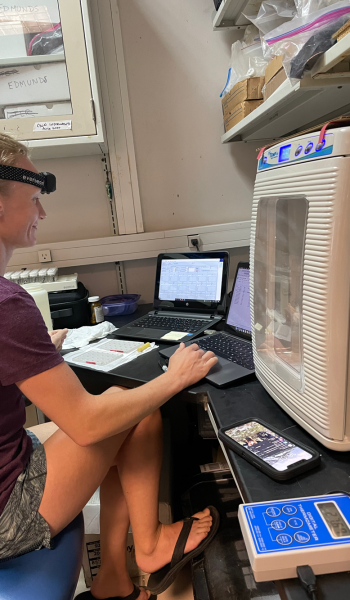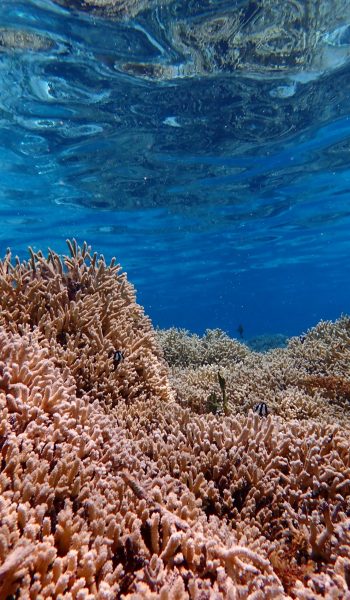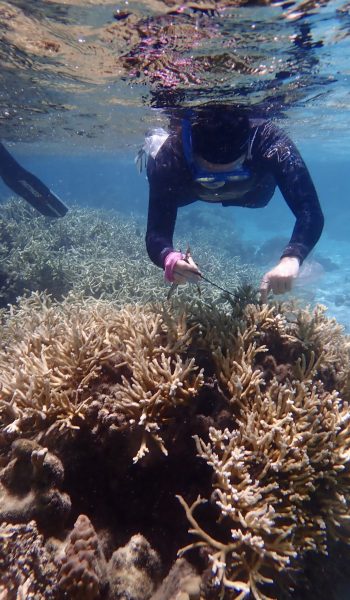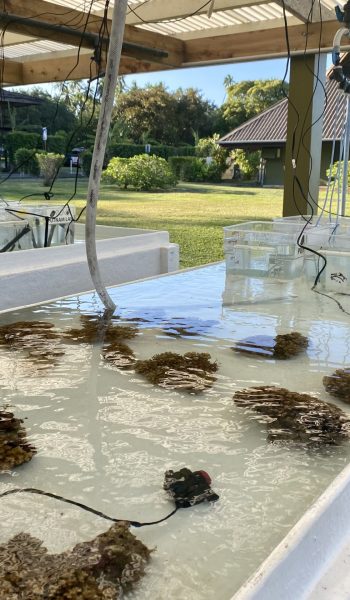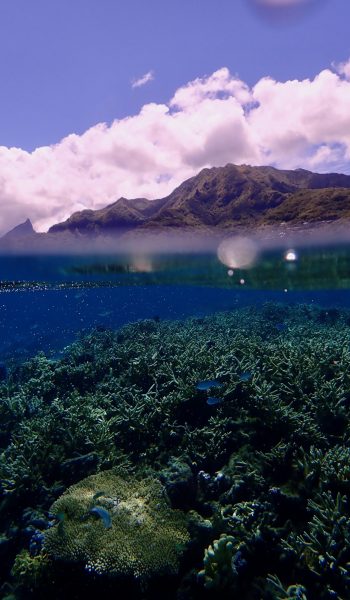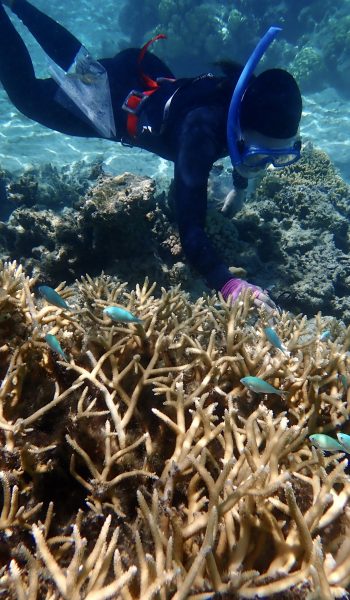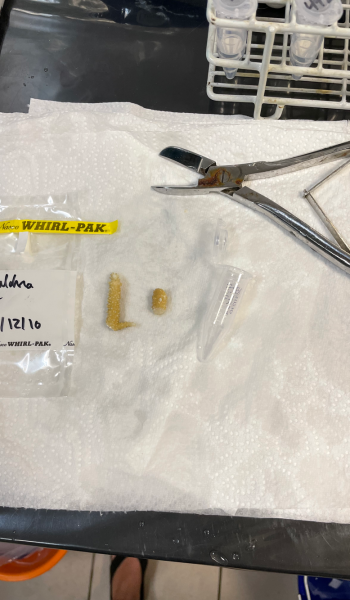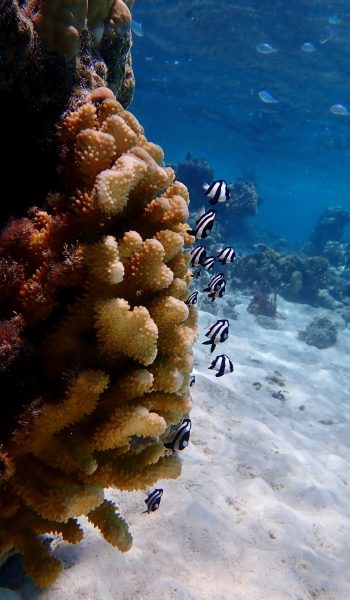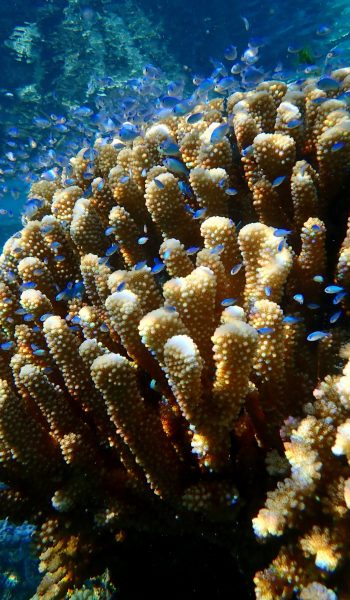Five months after the last sampling period, the team was headed back to Mo’orea for its third and longest expedition to date to finalize the first year of field sampling amidst the COVID-19 Pandemic.
OBJECTIVE
The goals of the fourth E5 Coral expedition were to conduct thermal tolerance experiments in Acropora and Pocillopora species and initiate project tracking coral histology in Acropora pulchra.
The E5 Coral team traveled to Mo’orea, French Polynesia to conduct research during coral spawning in November and December 2021 (#coralspawnathon2021).
TEAM
Hollie Putnam, Ariana Huffmyer, Pierrick Harnay, Alexandre Fellous
DATE
November 30th to December 15, 2021
Teamwork makes the research dream work
in the midst of a pandemic in French Polynesia
The E5 team traveled to Mo’orea, French Polynesia to conduct research during coral spawning in November and December 2021 (#coralspawnathon2021). We had two primary goals for this trip:
- Investigate coral larvae response to elevated temperatures and characterize symbiotic nutritional exchange Acropora sp. and Pocillopora acuta.
- Initiate a long-term project to track gamete and reproductive development in Acropora pulchra.
Although we were unable to collect spawning larvae due to low larval yield in Acropora sp., we successfully collected over 11,000 planula larvae from the brooding coral, Pocillopora acuta.
We conducted a series of experiments with these larvae to answer the following questions:
- How is larval respiratory demand and photosynthesis impacted by high temperature?
- How does symbiotic nutritional exchange shift in larvae under high temperature?
- How does parental exposure to high temperature impact the thermal performance of their offspring?
We also spent several days out on the reef to tag and initiate a project tracking reproductive development in Acropora pulchra. We tagged 40 colonies of this species and our team will be conducting monthly sampling efforts to track gametogenesis (egg and sperm production) of this species.
We had a productive and fun field season. Members of our team will be back in the field this spring!
4
11,000
52
12
Sample collections, processing, and lab analyses.
11,000 larvae counted: 41 respiration plates (100 larvae per plate) = 4,100 larvae, 18 physiology samples (50 larvae per sample) = 900 larvae, 72 isotope incubations (50 larvae per incubation) = 3,600 larvae, 3 developmental stages x 2 parental temperatures x 2 larval temperatures x 2 times x 2 days (50 larvae per incubation) = 2,400.
52 corals sampled: 40 sampled colonies for histology of Acropora pulchra, 12 sampled colonies for histology of Pocillopora.
12 colonies spawned: 12 colonies of Pocillopora, 10 colonies of Acropora.


